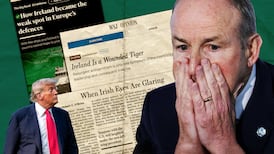Alongside the two dozen legal texts and political declarations that so far comprise the Windsor Framework, the UK and the European Union have each published guides in plain English giving their own descriptions of the deal.
The UK calls its guide a command paper; the EU calls its a memo. They are completely different. As a rough summary, the EU insists little has changed in principle while the UK insists much has changed in practice. While these opposite spins are not necessarily contradictory, the contrast between them can be absurd.
State aid is the most glaring example. Last month, the British government briefed the press that state aid would be removed from the protocol altogether.
The UK guide admits it has not been removed but claims the protocol has never applied to 98 per cent of subsidies within Northern Ireland, while a new clarification ensures there will be no ‘reach back’ of the rules into Britain, which had been a serious concern.
READ MORE
By comparison, the EU guide declares the protocol section on state aid still applies without restriction. Even the clarification is just a restatement of the protocol text.
What has actually changed is legal precedent. The first ‘reach back’ case was brought in London last year and the high court threw it out. The European Court of Justice (ECJ) would be expected to note this ruling, made under the UK-EU free-trade agreement. It has clarified the protocol on state aid rarely applies in Northern Ireland and effectively never applies in Britain.
Where the EU has undeniably changed the protocol it congratulates itself on its flexibility, yet is at pains to insist it has not been too flexible.
The EU did not “renegotiate the protocol”, the first point of its guide explains.
It merely used a treaty mechanism intended to correct errors, omissions, deficiencies and unforeseen circumstances, while “not amending the essential elements of the protocol”. The UK guide says the deal “fundamentally amends the text and provisions of the original protocol”.
The Windsor Framework is a genuine achievement, representing real movement by both sides ... However, it is still infuriating to see London and Brussels insist they are right
The Stormont brake is the deal’s principal innovation, addressing concerns from unionists and others on a democratic deficit.
The UK guide describes it as “removing the ultimate authority of the ECJ in areas in which it would affect day-to-day lives”.
The EU guide says: “There is no change to the role of the Court of Justice of the European Union. The Court of Justice remains the sole and ultimate arbiter of EU law.”
In reality, both guides are correct and beside the point. The Stormont brake is essentially an article 16 request from the Northern Ireland Assembly. It lets the UK unilaterally disapply an EU law in Northern Ireland, incidentally removing its ECJ jurisdiction. The dispute is then addressed through international arbitration, where the ECJ would never have had a role.
The red and green channel sea border is where the UK has secured most practical change, although its claims of removing paperwork are significantly oversold. Nearly 2,000 pages of EU law no longer apply on medicine, food and whole sectors of manufacturing. Goods from Britain, meeting British standards, can flow in with little more than an invoice and a label – if suppliers register with an expanded trusted trader scheme.
This is “a form of dual regulation”, the UK guide explains. Or as the EU guide puts it: “There is no dual-regulatory regime.”
But the UK guide goes further. “It is international standards which apply in practice,” it concludes, “with commitments from the UK and EU in the [free-trade agreement] to maintain them. Indeed of the nearly 3,600 international goods standards in place, there are differences between the UK and EU in only 11.″
The implication that we have been trapped in a futile argument for years is rather casually made. If international standards are what matter, why not dynamically align with the EU on goods and make the protocol redundant?
The Windsor Framework is a genuine achievement, representing real movement by both sides. It has delivered improvements, repaired relationships and should restore Stormont sooner than expected. The thawing UK-EU relationship is ultimately more important than the details or shortcomings of any deal. Some conflicting spin after a difficult negotiation is inevitable and hardly disastrous.
However, it is still infuriating to see London and Brussels insist they are right.
Change has been reluctantly forced upon them because the protocol they originally agreed was unworkable and dishonest. The EU portrayed its rules as akin to the laws of the universe and interpreted the Belfast Agreement as it went along to suit its own ends. The UK has had no coherent strategy or objective since the Brexit referendum. Through cynicism, pomposity and pride, neither would admit it and they still will not admit it.
In accordance with the oldest protocol in Northern Ireland politics, they have become as bad as each other.














